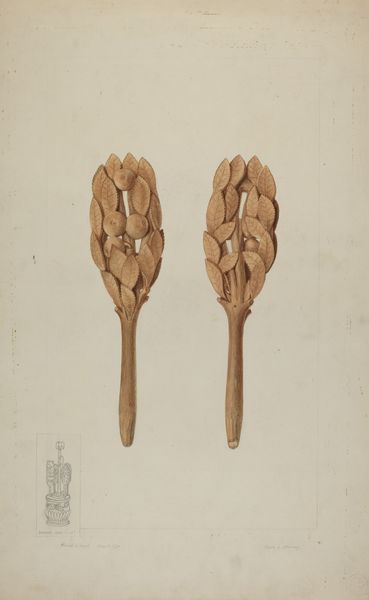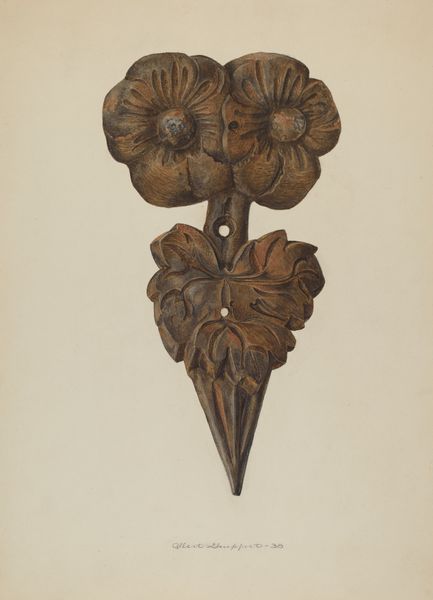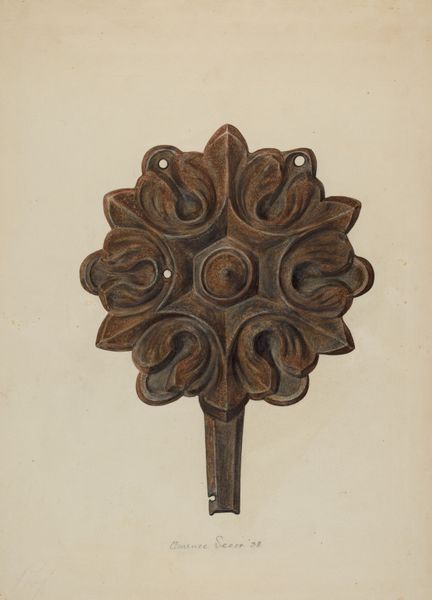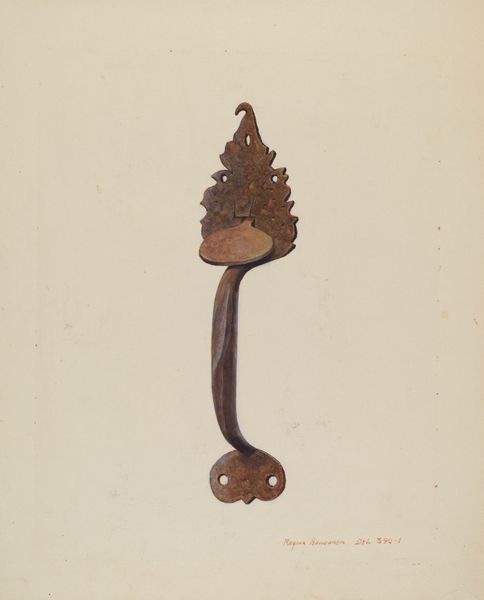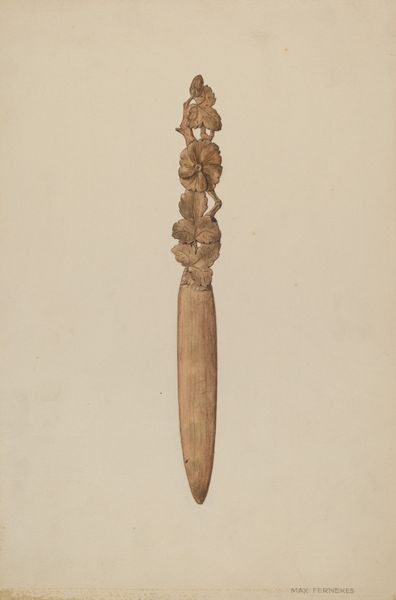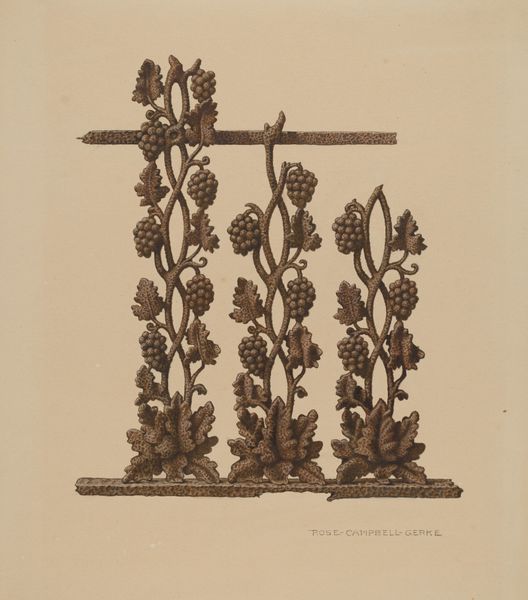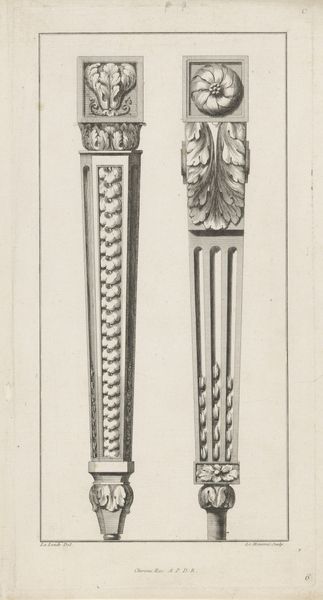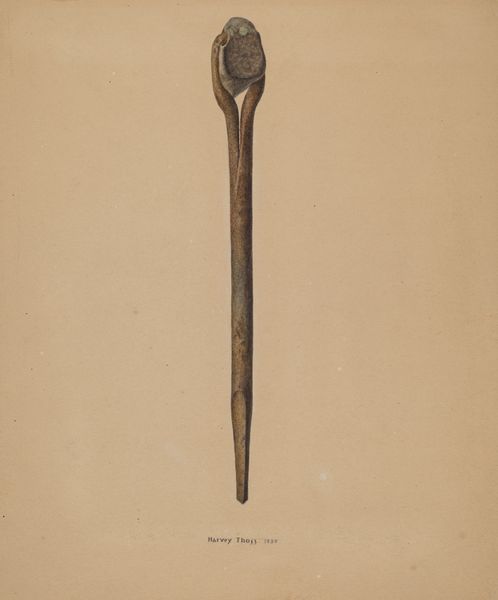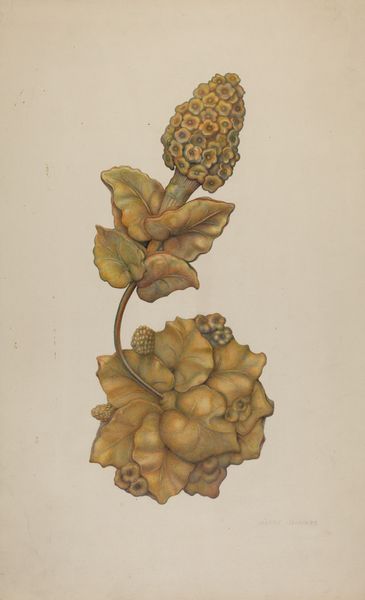
drawing, carving, watercolor, wood
#
drawing
#
water colours
#
carving
#
watercolor
#
geometric
#
wood
#
watercolor
Dimensions: overall: 52.4 x 32.2 cm (20 5/8 x 12 11/16 in.)
Copyright: National Gallery of Art: CC0 1.0
Editor: So, we’re looking at "Wood Carving," dating roughly from 1935 to 1942, by Eldon Allen. It's rendered in watercolor and possibly intends to show a wood carving. I find the composition strangely… botanical and rigid, all at once. What do you make of this? Curator: My eye immediately jumps to the tree motif. Consider trees – throughout time and across cultures – often embody concepts like life, growth, and connection to ancestors. The stylization here seems important, like an echo of earlier forms. Does it evoke a sense of memory to you? Editor: Yes, perhaps! There’s something almost… archaic about the way the leaves and fruit are rendered, despite the clear attempt at realism. Curator: Indeed. Think about the visual language – the vocabulary – of symbols. Even seemingly straightforward depictions of nature can function as signifiers of deeper meaning, subtly embedded in cultural narratives. The medium – watercolor approximating wood – reinforces that idea of transformation. Have you seen similar botanical depictions in other works of that era? Editor: Now that you mention it, yes, some WPA-era designs featured stylized plants, but they usually felt more celebratory, less… solemn? Curator: Precisely. This isn't pure celebration. There is that stillness about them; but this feels more like the careful preservation of a visual idea, the artist considering what resonates across time. Maybe they aimed to capture something enduring through form. Editor: It's interesting to consider the role of memory and endurance embedded within these seemingly simple forms. Thank you! Curator: And thank you. It's a fascinating work, urging us to think about continuity in artistic expression.
Comments
No comments
Be the first to comment and join the conversation on the ultimate creative platform.
